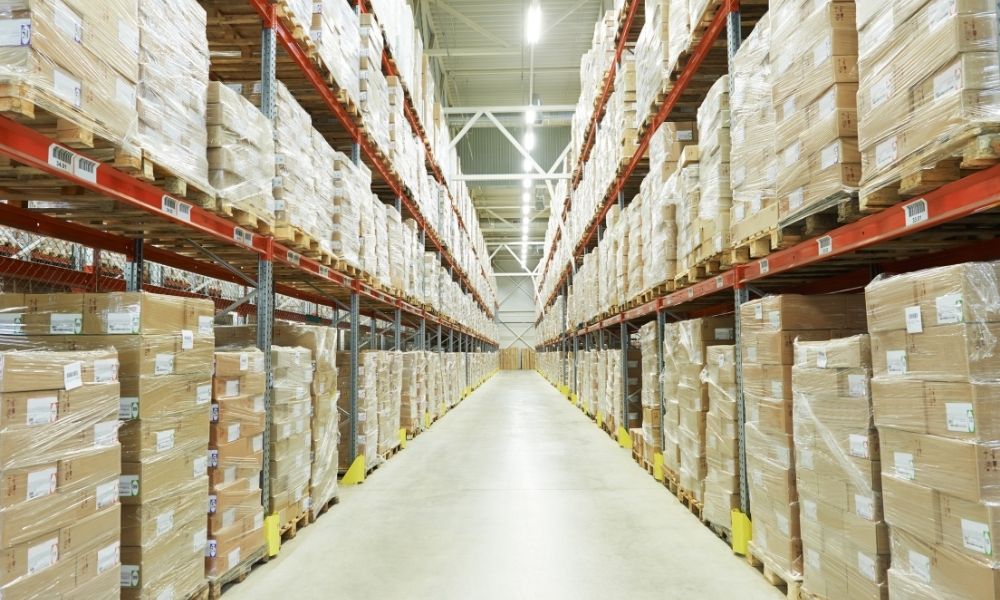Finding the right storage system or a mix of systems is crucial for the efficient operation of your warehouse or distribution center and to ensuring all products and materials are neatly stored away for safety and easy access. Because there is a bevy of warehouse storage equipment to choose from, it’s best to consider the different types of warehouse storage systems before considering changes or a new layout.
Storage Cabinets
Storage cabinets are one of the most basic types of warehouse storage systems, ideal for storing away a large volume of small items. The size of the cabinets and storage capacities can be tailored to the size of the materials and products your warehouse stores away. A benefit of using storage cabinets is that they can be modified for greater efficiency by using partitions. Partitions allow smaller materials to be stacked alongside lengthier or larger materials. While cabinets may seem to limit in comparison to some of the other systems we’ll touch on, it’s worth noting that cabinets are perfect if you need to ensure the materials are protected from external conditions or need extra security.
Static Shelving
Static shelves are similar to storage cabinets in that they are fixed to a particular location. The ability to adjust the heights of the shelves allows you to formulate a layout that’s beneficial to your warehouse’s efficiency particularly if it’s dependent on locating stock-keeping units (SKUs) quickly.
If locating your SKUs quickly isn’t your top concern, the primary benefit of static shelving is that they’re the most stable despite being a simple design. The simple structure allows for the other static shelves to be built in close proximity to each other so that a warehouse can optimize its space and increase efficiency.
Mobile Shelving
In contrast to static shelving, mobile shelving contains opportunities for higher storage capabilities. For mobile shelving, the shelving is affixed to a track that allows for fewer aisles and ensures each rack is more easily accessed. When it’s built for mobility, the structure of the shelving is supported by sturdy conventional components like decks and bracing that stabilize and support the chassis which allows the storage structures to move along the tracks.
Dynamic Storage
Also known as “Forward Pick”, dynamic storage systems are intended for the section of the warehouse where the items are consistently used to fulfill your orders. In this area, high selectivity and density storage are crucial. To this end, there are a few options to choose from that will improve accessibility.
- Push-Back Rack. This system ensures no space is wasted. When product is added prior inventory is pushed back to reduce honeycombing and empty pick faces. The store inventory is kept neatly organized while remaining easy to reach from the aisle.
- Pallet Flow. Using a combination of elevated rails and components like wheels, conveyors, or rollers, pallet flow makes use of gravity to improve rack-supported structures. Pallets are loaded in the back and move towards the front through the force of gravity. As you unload one pallet, another will move into its place and be ready for unloading.
- Drive-In. This solution is designed for high-density storage. This system maximizes your warehouse’s space and height by reducing the forklift operating aisles. You’ll often find this the most popular method of storage for warehouses with a homogenous inventory of products.
Double-Deep Racking
Sometimes a warehouse must handle a high-volume inventory while only having so much space. In this scenario, the most efficient system is typically double-deep racking. This is when standard-sized pallets are placed back-to-back to, essentially, create double-sided shelving.
When using double-deep racking, it’s typic
ally accompanied by a “last in, first out” inventory system. This it’s not the most ideal system for perishable inventories. Instead, consider this system for inventories of clothes, appliances, and electronics.
Double-deep racking is helpful for inventory management that prioritizes SKUs according to their value. Goods that accrue in value over time are capable of safely being stored away in a double-deep racking system but increase the chance of your warehouse becoming overcapacity.
Automated Storage and Retrieval Systems (AS/RS)
Automation is becoming increasingly more common as delivery demands rise and customer expectations increase. Automated Storage and Retrieval Systems (AS/RS) can quickly improve the efficiency of a warehouse by eliminating the travel time of forklifts and the time required to locate and retrieve specific products. AS/RS systems are best utilized for high throughput scenarios, heavier inventory loads, and high-volume processing for a limited number of SKUs. AS/RS systems increase space for storage by reducing aisle spacing traditionally accommodating lift trucks.
AS/RS systems when integrated with WMS/WEX are instrumental in inventory management and improving order accuracy and above all reducing possible safety hazards.
Mezzanines and work platforms add instantly usable floor space to your warehouse by using air space for storage, picking, or other value-added activities. When relocating is not an option or your location limits your ability to build on, adding a mezzanine or platform can provide immediate benefits.
In order to choose the most efficient system for your warehouse, visualizing the future and your growth plans is key. Anticipating future needs will ensure your chosen system will accommodate your immediate needs and have the flexibility and capacity to grow with your business. The warehouse experts at RMH Systems can help develop a plan that encourages growth while fitting your needs. Contact us today for a free consultation today!
